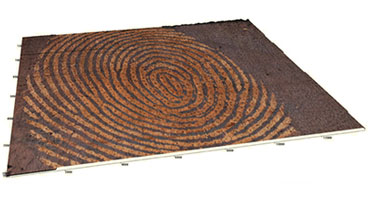Fingerprinting and forensic chemistry

Fingerprints are the cornerstone of identification, whether suspects or unknown victims of crime. Their presence links individuals, objects and locations. In criminal investigations, the most commonly encountered mark is a latent fingerprint, a non-visible mark created by transfer of colourless secretions from pores along friction skin ridges on a fingertip. By suitable physicochemical treatments, either the fingerprint residue or the exposed background can be coloured, generating visible contrast between the mark and background. This requires spatial control of surface reactions, exploiting materials characteristics of the object or the properties of deposited materials.
Redox processes – electron transfer reactions – are being developed to deposit, etch or create reagents to accomplish latent fingerprint visualisation. For reactive metals, such as copper (from metal theft or bullet casings), galvanic exchange reactions can be used in a “templated” process: the fingerprint masks part of the surface and a more noble metal, such as silver, is deposited to generate a negative image of the fingerprint. For non-reactive metals, such as stainless steel (involved in knife crime), electrochemically driven polymerisation can be used similarly; for conducting polymers, the colour of the polymer can be varied to optimise contrast. Nanoscale metal particles can also be generated in situ by redox reactions, to visualise latent fingermarks on such materials as paper (documents, currency) and polymers (wrappings of drugs and explosives).
Enhanced control of these processes is being explored for greater sensitivity of detection and for wider applicability to new material surfaces. Surface topographical, optical and chemical compositional mapping capabilities are being developed to enhance identification capability.